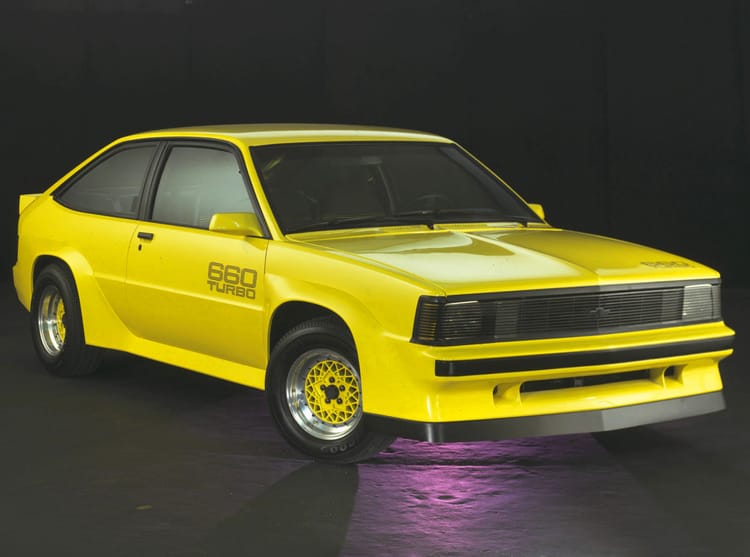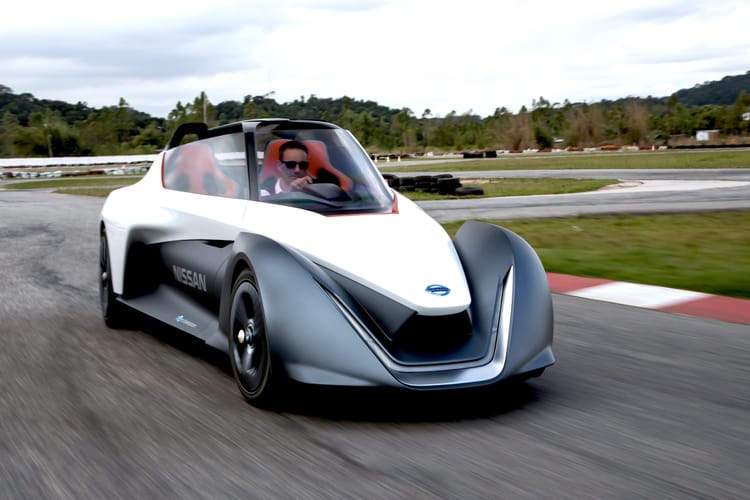Monocoque Engineering Box
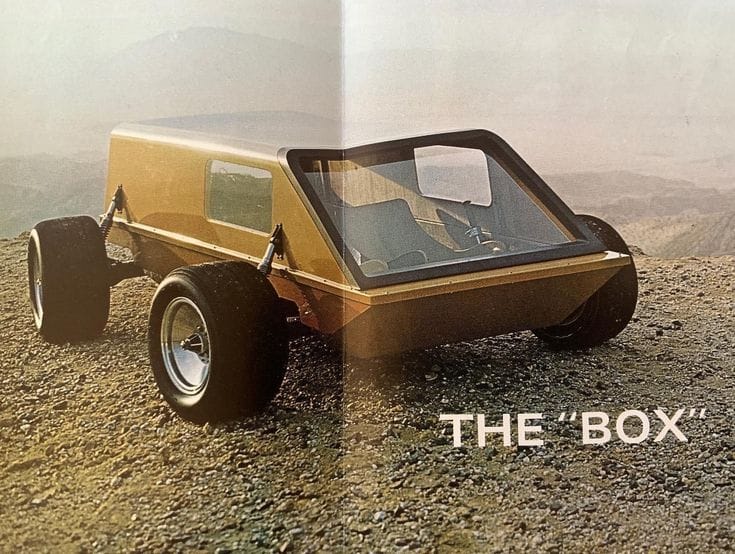
As if it wasn’t obvious, I tend to gravitate more toward vehicles that are simple and approachable.
Now, this is not the Volkswagen-powered Brubaker Box you may have heard of, even though they're broadly similar in design and styling.
No, the Monocoque Engineering Box was a smaller yet far more ambitious project that ended up being something like a road-going kayak with wheels—and about as consumer-friendly as a lightweight vehicle can get.
As you can see from the diagram below, the Box was engineered in a way unique from other vehicles.
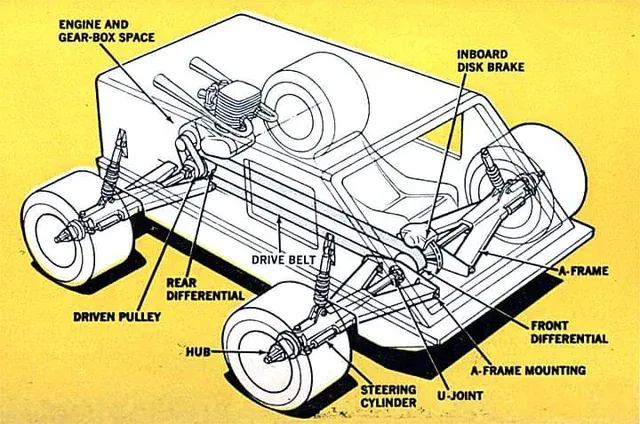
Its small components — including belt-driven four-wheel-drive, four-wheel-steering (via what look like pneumatic pistons) and independent suspension — were housed in and around a literal balsa wood and aircraft fiberglass monocoque.
The two-piece body (top and bottom halves) mean the two occupants had to get in and out through the front hatch, which doubled as a windshield. Count me in, even though a modern version of the Box in this size would end up looking like an autonomous coffin.
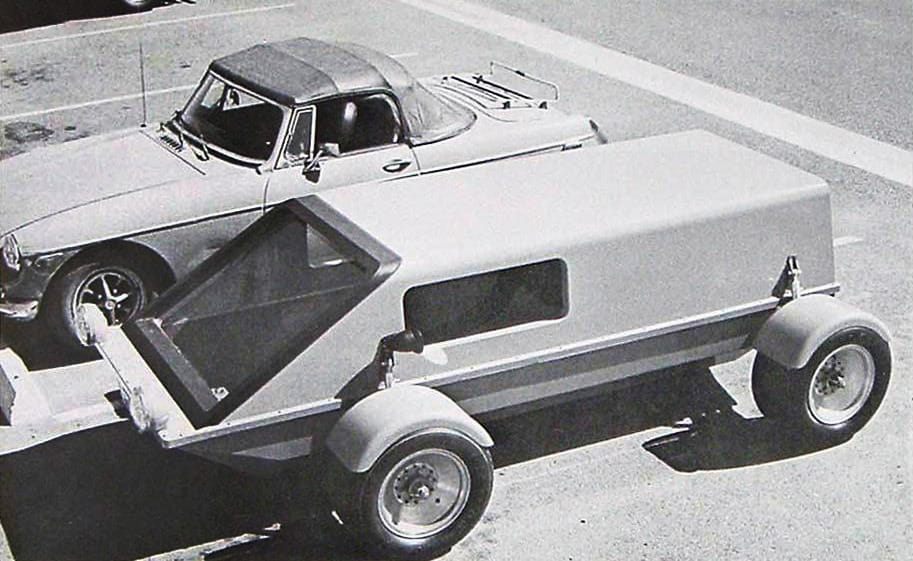
For such a small, purpose-built machine, its controls were different, too: gears and clutch are done using your right hand, with a twist-grip throttle for your left. Here's where it gets odd: braking is done, based on my research, by twisting the throttle forward, and steering is done with the driver’s feet.
When examining the above image, you’ll no doubt notice the steering wheel…I do have an explanation. I said foot steering was improbable, didn’t I? Keep reading.
With parts scavenged mostly from motorcycles—or ATVs—its 60 horsepower 500-cc Kawasaki unit could provide incredible performance of the quarter mile in 13.5 seconds and a top speed of 150 km/h (95 mph). Not a typo. Performance was electrifying because of its insane weight of just 317 kg (700 lbs).
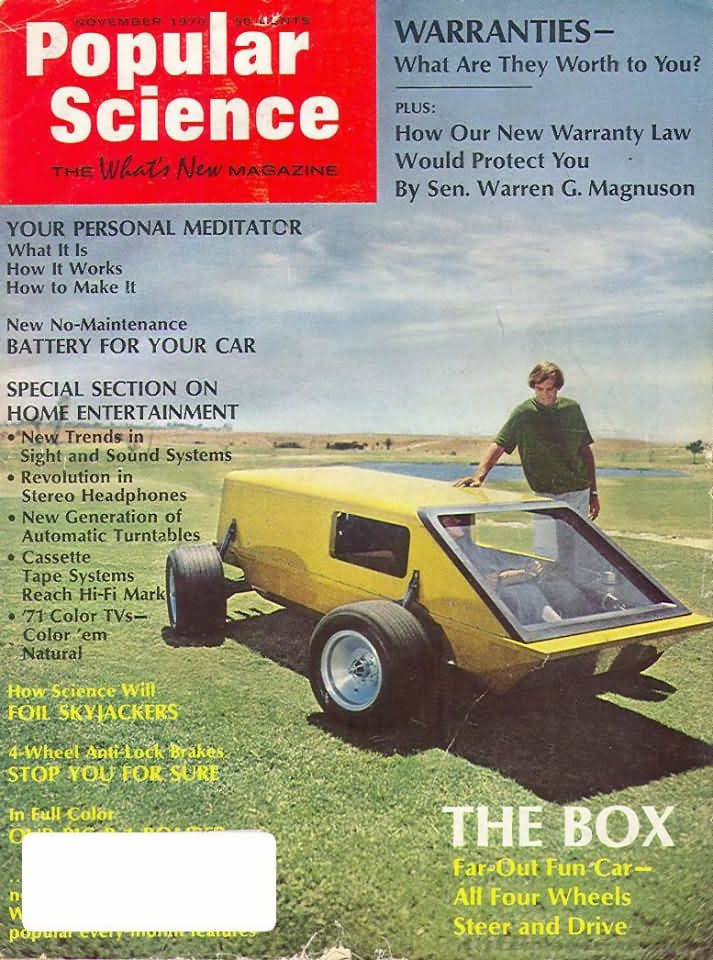
Given its unique construction, what would stop it from…oh…I don’t know…from floating? Nothing: the Box was amphibious, too! Add it all up and it was enough to get the project onto the cover of Popular Science in late 1976; note the lack of mirrors and other finishing details.
At least two versions were made, the original prototype as well as a fully-assembled version of the kit that incorporated headlights, license plates, mirrors, and other legalities:



